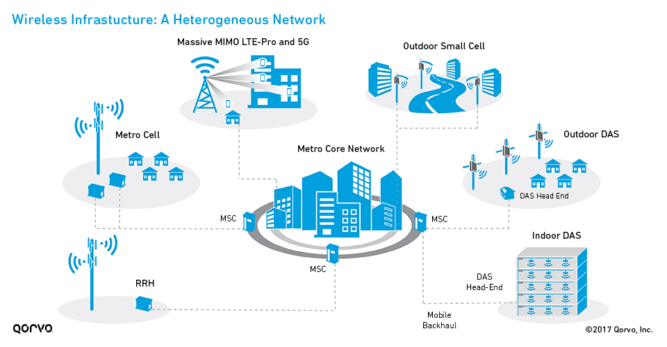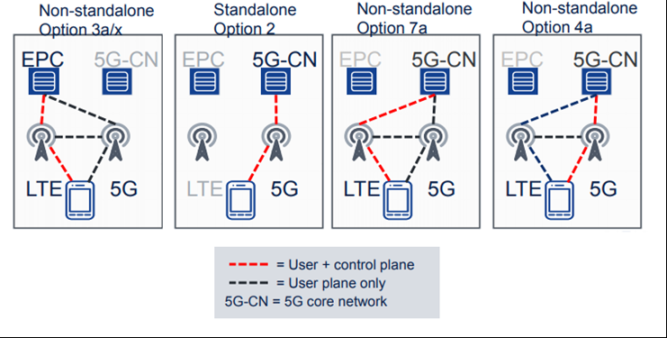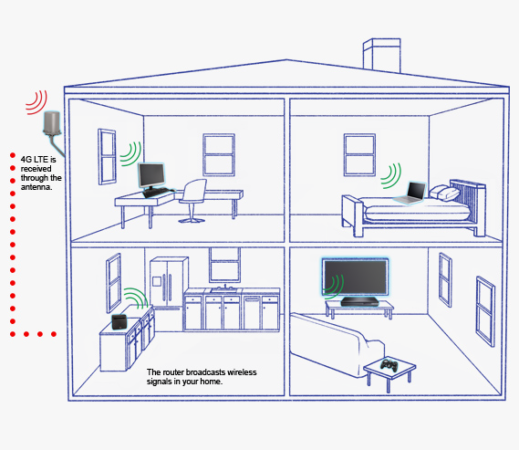Our everyday life seems impossible without cellular networks. Over the past years, they have reached a rapid progression and aren’t going to stop development. The newest evolution of the network systems is 5G technology that is going to change our lives drastically. So, what this new age of connectivity is offering us? First of all, it is higher download speed, almost 100{3fbfd6f1e6b19884051837dbbbebf333964dd5fac151615ffbd47b80e5ecc87a} reliability, and ultra-low latency. The 5G technology gives an opportunity both for consumers and enterprises to interact with a network in a new, improved way. Let’s immerse in the peculiarities of this new evolution and sort out which requirements it has and what benefits it will bring us.
Big Boss or The Network of Networks
The motto of the 5G technology is “to connect everything.” With the primary goal of bringing the connectivity to all devices, this evolution is going to provide us with the new devices on the network. The implementation of the 5G will be beneficial both for consumer and enterprises, although they will use the new opportunities differently. For consumers, it will be an opportunity to increase the number of connected devices and get the richer mobile broadband experience. At the same time, for enterprises, 5G will be favorable because of the increased mobility, capacity, and flexibility. In the latter case, it will be financed through the significant investments to build networks for private enterprises and adaptation of the 5G products for the company specific needs.
The 5G network has all rights to proudly bear the title of “Big Boss” of all the network systems existing for to date, and there are several undeniable reasons for it. First of all, it has a high capacity of 1Gb per second download speed. Then, it can boast of the low latency of less than one millisecond. In addition to this, 5G can provide the massive connectivity implications that can provoke innovations IoT use cases, improve global connectivity, and eventually spark the economic growth.
Taking into account all the advantages of the new 5G tech it is not a surprise that it requires a significant amount of investments. The number of cell towers, base stations, and bandwidth capacity has to be increased due to increases in data demand and much faster data speeds. 5G is expected to become a “Network of all the networks” with the next generation mobile core, services-based architecture, and unique core network requirements. All this will provide the operators with an opportunity to edge computing, changing traffic priorities, and assign resources to all the customers in the context of network virtualization.
5G epoch. When, where, and how much?
We have already mentioned that the implementation of 5G tech requires significant investments, so it is quite evident that it will emerge gradually. Most probably, there will not be a “smooth”deployment among all the operators, and it is expected that the US market will be among the first ones who test the 5G first. We also expect that the carriers will come up with a decision to reduce the costs by collaboration and sharing the infrastructure. So, what we have for now is that the 5G evolution will happen gradually in phases across different countries and carriers.
- The question one – when? The development of 5G technology has begun in 2015 and is expected to be widespread in a global way by 2025. Although, this date is very approximate because different countries have different deployment drivers. The high level of competition provokes the rate of 5G evolution in the US.
- Question two – where? Speaking about the rate of 5G tech evolution in Europe we have a bit different situation. Because the main catalyst for 5G deployment is mobile broadband, the carriers are still doubting the necessity of the significant investments required by the 5G implementation because in 2018 the 4G fully penetrated the market. Moreover, the additional average revenue per user (ARPU) from consumers is unlikely. Considering countries with the lower penetration, such as Africa, Latin America, and the Middle East, the economic justification of the 5G implementation is even more doubtful as the 4G technology is more than enough in the majority of cases.
- The question three – how much? Such newest technology features as low latency, network slicing, faster download speed, and other unique 5G specs are enterprising actively, but the commercial applications are far from being ready. For the implementation of the new epoch network with all these features, a massive network of specially developed data centers is required. These centers have to be located less than sixty miles away from each base station and require significant investments. The application still isn’t ready, and the carriers haven’t got noticeable results marketing and defining the value-add services to the customers, not even talking about developing the new set of services for the enterprise customers.
According to standards. How are the cellular networks categorized?
Realization of the 5G is a time- and efforts- spending process. It should be standardized and categorized in a particular way. So, how to define a cellular network? For the categorization and standardization, the Third Generation Partnership Project is responsible or if briefly- 3GPP. It is a global organization that appeared with the development and implementation of the 3G network. Nowadays, it consists of seven national telecom standards development organizations that are responsible for creating network specifications for cellular networks such as 3G, 3.5G, 4G, and others. The specs are divided into three groups:
- radio interfaces;
- core networks;
- services/protocols.
Prior realizing a new cellular network, 3GPP establishes standards with which the new network system must comply before being implemented as a cellular generation network. Among these specifications, such parameters as minimum data speed, maximum lag time, and compatible spectrum bands may be included. When 3GPP establishes these specifications, service providers tram up with chipmakers to evaluate whether their developing networks comply with these new standards. As a rule, it is the period of the maximal rivalry between different providers all over the globe.
Speaking about 5G evolution, it will occur in two major stages. Firstly, non-autonomous 5G is expected to appear in 2019 in the US. It will include the 5G New radio access network and the 4G LTE network which already exists. As well as in the period of 3G to 4G transition, the new 5G network will interact with the 4G to avoid any possible gaps in coverage.
For the autonomous 5G architecture, 3GPP has set three options: Options 3, 4, and seven presented below.
These setups define the way the new 5G device is connected to the core network. For example, the control and the user plane can connect in a different or the same paths. The option 3 implies two links (4G and {3fbfd6f1e6b19884051837dbbbebf333964dd5fac151615ffbd47b80e5ecc87a}5G) to the same mobile core (4G). Option 7 and 4 are not autonomous and are the evolution of the primary Option 3. In case of these options, a 4G base station will deal with the control signal while the 5G station will be handling the data. The 5G core will allow the “true 5G” that means network slicing can work as an autonomous network as it will operate independently from other generations of network systems.
What will we get with the 5G implementation? Benefits for consumers
All that is created and developed nowadays in the technological world is designed for people to make their life maximally comfortable and simple. So, it’s time for the most critical question – what will we get from the f 5G deployment? How will the new age of connectivity influence our lives? First of all, 5G is considered enhanced mobile broadband, so it will noticeably expand the mobile network capacities by providing over one gigabit per second data speed and latency of less than one millisecond. Impressive, yes? In its turn, the enhanced mobile broadband will give the users the fiber-like data speeds that mean improved virtual reality, instant download of applications, and opportunity of high-quality over the top television video streaming. At the same time, a network slice providing the super-low latency and ability of device-to-device communication will allow using the applications that require real-time responses. To ensure this type of communication, 5G offers a reliable network with a latency of less than one millisecond that will allow performing:
- real-time human-to-human interactions;
- real-time human-to-machine interactions;
- real-time machine-to-machine interactions.
In the future, it may result in the implementation of such mission-critical applications as autonomous vehicles, smart cities, and factories. Such 5G innovators as Nokia and Qualcomm have already announced their willingness to make a partnership for developing software for self-driving vehicles. From the unreal dreams or something from the science-fiction movie, it nowadays has all the chances to become a reality.
For ordinary users such as you and I, the implementation of 5G will bring improved mobile broadband experience, providing us with data speeds that allow enjoying top-notch virtual and augmented reality, seamless gaming experience, and 4k/8k video streaming. The significant advantage for the consumers will be the price, as in comparison with costs for enterprises it will differ significantly. For example, carriers may pay the additional fee for the higher throughput service, that provides with an opportunity to be around connected devices. Among them can be wearables, IoT home devices, or computers and tablets connected to the network via fixed wireless access.



Recent Comments